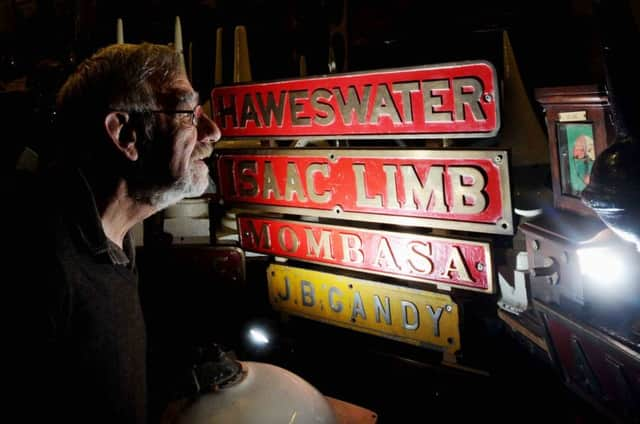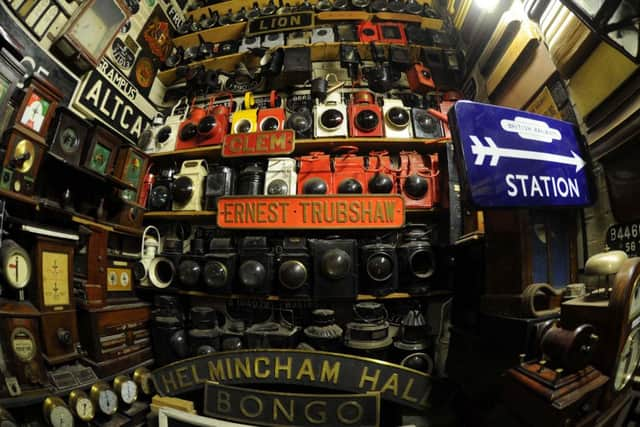Aladdin’s cave of Doncaster rail treasures comes out of shadows


Atop a steep spiral staircase in the clock tower at Doncaster’s Hall Cross Academy is one of Britain’s most fascinating collections of train memorabilia, yet only a few can lay claim to having cast their eyes over it.
But all that is about to change. This Aladdin’s cave of wonders will emerge from the shadows as the South Yorkshire town begins a week-long celebration of its rail heritage this week.
Advertisement
Hide AdAdvertisement
Hide AdThe astonishing assortment of railway signs, signal plates, pieces of track, newspaper cuttings and other paraphernalia going back to the 18-century is the culmination of several decades of collecting which began with a set of young schoolboys.


Pupils and teachers from Doncaster Grammar School founded a railway society in the early 1930s, and in 1937 they received a signed photo of engineer Sir Nigel Gresley, igniting a passion for ‘railwayana’ which would endure for many years to come. “We think we have around 2,000 items, but it’s impossible to count as there is so much,” said Dave Rogerson, a former teacher and trustee.
Over the years, members amassed a selection of rare exhibits including the original nameplates of the Gresley-designed ‘Cock O’ The North’, one of the steam locomotives designed by Sir Nigel between 1934 and 1936. The society also has a steam locomotive nameplate from the Princess Anne, one of the engines wrecked in the 1952 Harrow and Wealdstone railway disaster.
Interest in the society faded, and it disbanded in the 1970s, but the collection was kept alive by former teacher, the late Tony Peart.
Advertisement
Hide AdAdvertisement
Hide AdMr Rogerson, 70, who worked alongside him, said: “Tony went everywhere gathering things. He’d go to building sites where they were dismantling old railways and he’d ask them for things. One of the stories he used to tell was that when they were scrapping a signal at an old colliery in north Doncaster he went and got it and carried it right through the town on his bicycle.”
Due to the size of the collection, it has remained in the clock tower and is only available to view by prior appointment. So crammed full of items is it, that only around six people can be in the room at the same time.
“Only the railway community know about it, really, and some don’t believe it exists until they come and see it,” added Mr Rogerson.
Its reputation as the most exclusive museum in the country could come to an end when carefully-chosen exhibits are displayed at Doncaster Mansion House as part of the council’s Rail Week, which begins on Thursday.
Advertisement
Hide AdAdvertisement
Hide AdTrustees hope it will re-ignite interest in the hidden gem, garnering support to find a publicly-accessible home for the entire collection. Doncaster’s tourism manager Colin Joy said: “York has the National Railway Museum and we would not seek to copy it, but this collection is worthy of a museum in itself and rail is such a huge part of Doncaster’s history. It’s so exciting for us to have some of these items to show, the long term plan is for us to have them on display permanently.”
Described as one of Doncaster Works’ greatest locomotives, Cock O’ The North first appeared in 1934 and was the largest ever built in Britain to haul passenger trains.
It was constructed at the main LNER works at Doncaster in 1934 where the famous Flying Scotsman locomotive had been built eleven years previously.
Novel features such as the Kylechap chimney/blastpipe and Lentz rotary cam poppet valve gear were incorporated into the design.
The engine was altered beyond recognition in September 1944, ending a great period of innovation in design on the LNER. A group is now hoping to raise £6m to recreate the locomotive.